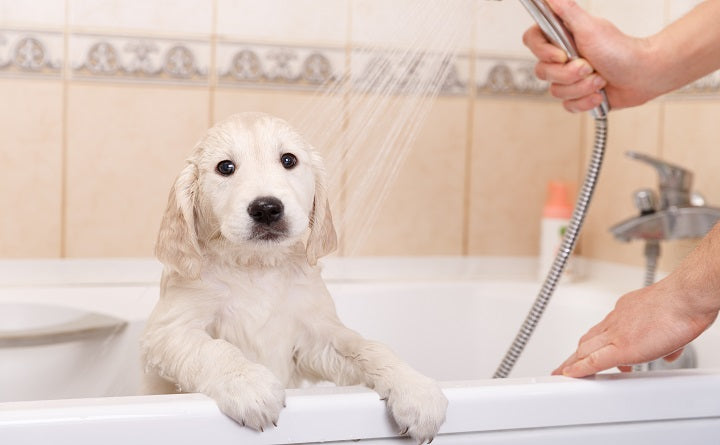If you have a four-legged family member who seems to get into every nook and cranny of your home, be sure that you’ve pet-proofed your plumbing. As a homeowner, it’s your responsibility to create a safe environment for people and pets where they can play, thrive, be happy, and stay safe.
Here are a few simple things you can do to help make your home’s plumbing pet-proof so you don’t have to contend with serious and expensive problems.
Dirty pets? Wash them outside.
If you have a dog or cat who loves to go outside after it rains, you’re going to have a lot of mud to clean up. When you wash your pet in the tub or shower, all that mud and matted fur will come off and go down your drain. This has the potential to cause a serious clog – one that you shouldn’t try to remove with harsh store-bought chemicals or a snaking device since these items could cause damage to your water lines.
Instead, you may have to call in a professional plumber to locate and remove the clog. Rather than having to shell out a lot of money for a plumber every time you need to give your pet a bath, rinse them off outside if the weather allows!
Keep your pet’s water dish full
Our cats and dogs don’t have the ability to run to the fridge or sink whenever they’re thirsty and need something to drink. Keep their water bowl clean and full or your pet will look for other water sources. This may mean that they try to drink from your toilet bowl. This sounds disgusting, and it is! It’s also hazardous to your pet’s health.
Even if you make sure your pet’s water dish is full, your cat or dog may still have a fascination with drinking from the toilet bowl. So, be sure you keep the lid closed.
Keep plumbing chemicals out of reach
While it’s not recommended to use harsh chemicals in your plumbing systems since these store-bought materials have been known to cause serious damage to water lines, you may still have them in your home. To prevent your pet from accidentally getting into the bottles, keep them in an area they can’t get to, just as you would for children.
Be sure exposed piping is concealed
If you have piping in your bathroom, kitchen, laundry room, or basement that may look appealing for your pet to chew on, keep it concealed. This can be done with cabinets, curtains, or rugs.
Avoid plumbing fiascos with simple pet-proofing techniques
You love your four-legged family member, so be sure you’re keeping them safe by taking care of any potential hazards that could result in both danger for them and plumbing problems for your home.


